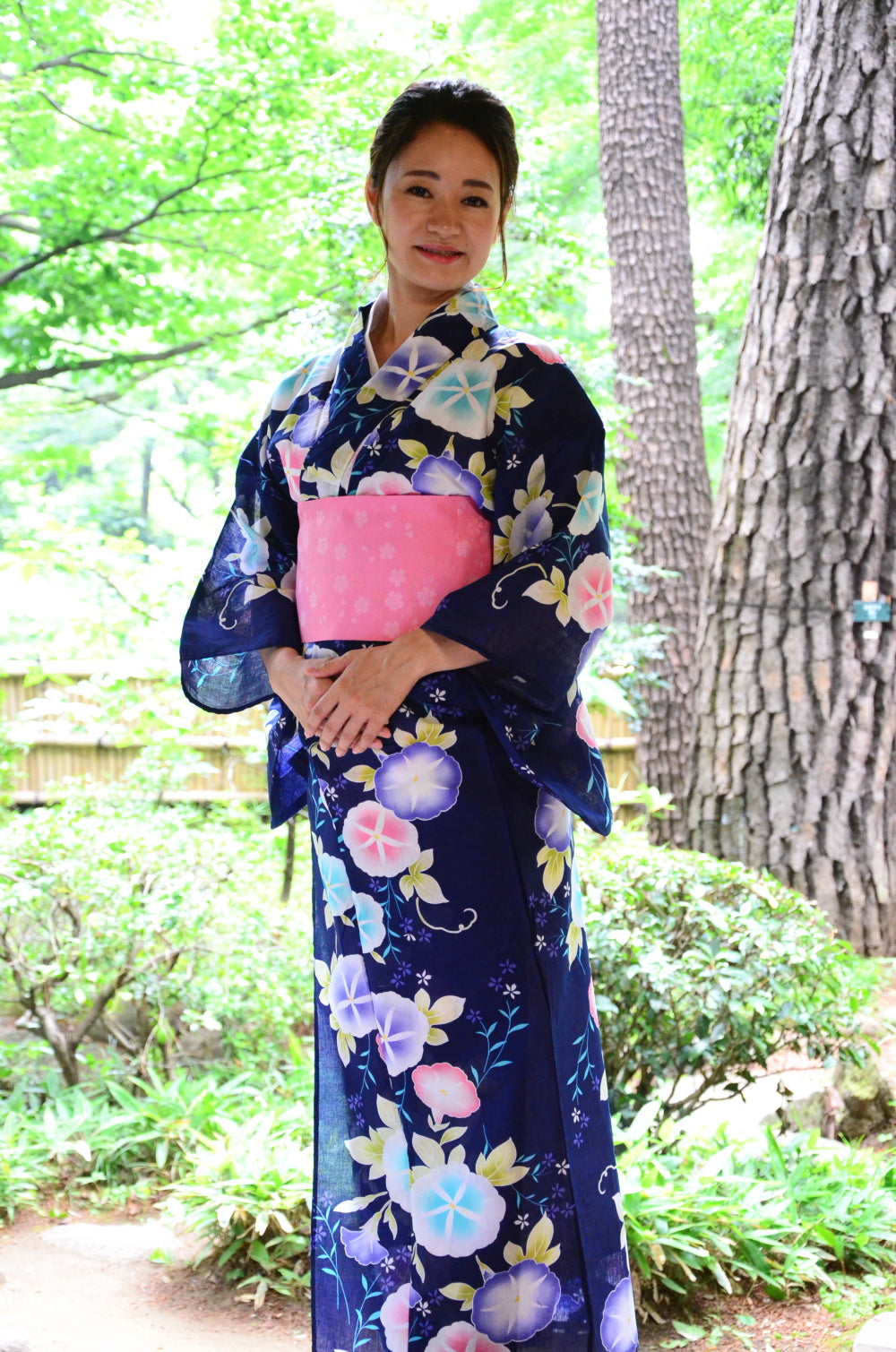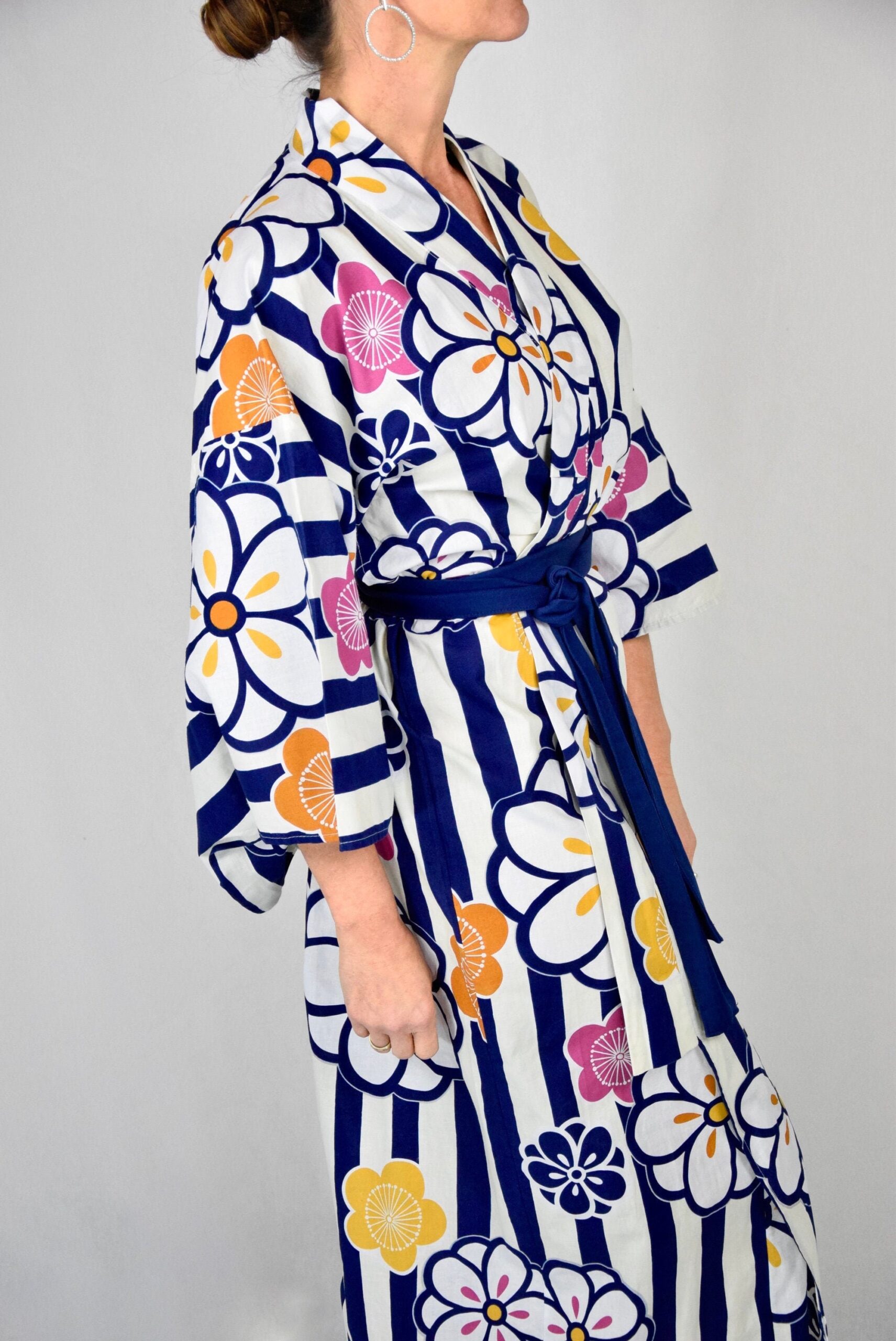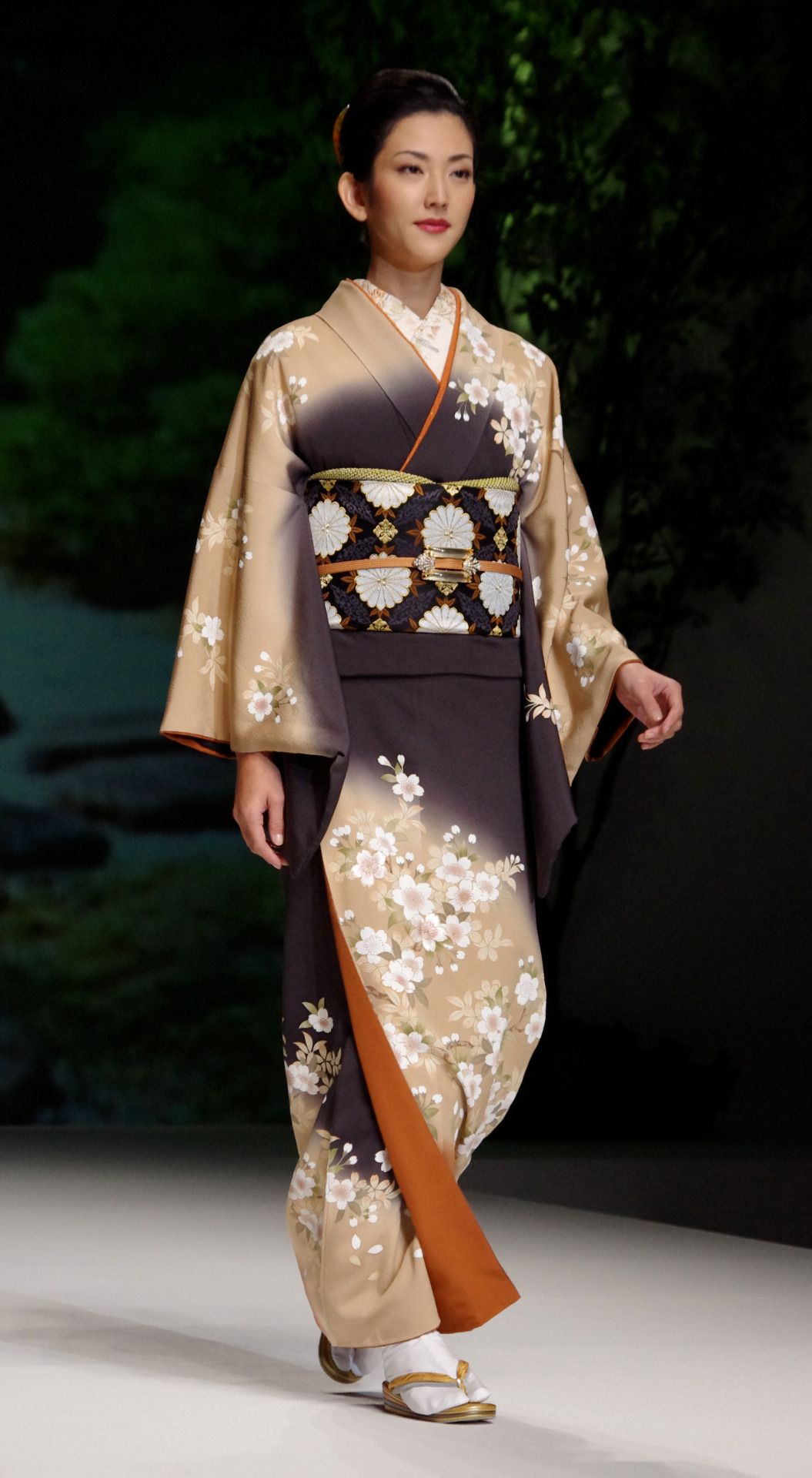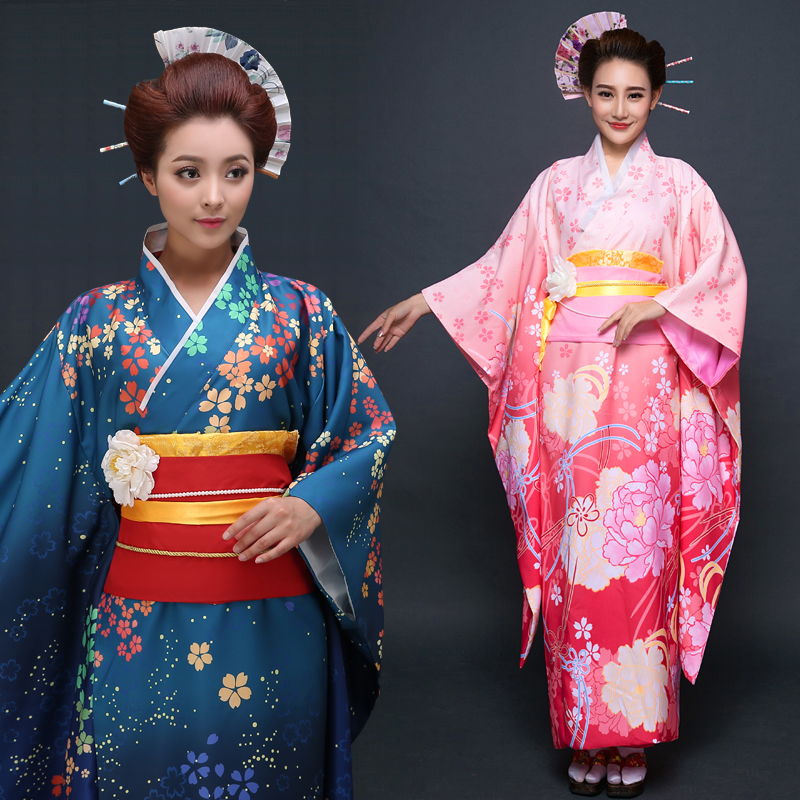Win a Free Trip to Japan!
Experience cherry blossoms and ancient temples
As the warm sun ushers in the vibrant season, the allure of the Japanese summer kimono captures the attention of fashion enthusiasts worldwide. Soft, breathable fabrics and exquisite designs make these garments a must-try for anyone looking to embrace both tradition and style in 2024. Beyond their aesthetic appeal, Japanese summer kimonos hold deep cultural significance, representing a rich history and craftsmanship. Whether you’re attending a festival or enjoying a leisurely afternoon, selecting the perfect Japanese summer kimono can elevate your summer wardrobe to new heights.
Introduction to Japanese Summer Kimonos
Japanese Summer Kimonos, known as Yukata, represent a vibrant and essential part of Japanese culture, especially during the warmer months. Unlike traditional kimonos, which are often made from heavy silk and worn on formal occasions, the Yukata features lighter materials such as cotton or linen, making it breathable and comfortable for summer wear.
Here are some key aspects to understand about Japanese Summer Kimonos:
- Breathable Fabrics: Designed for comfort, Yukata uses breathable materials, allowing air circulation which is ideal for hot weather.
- Casual Style: The Japanese Summer Kimono offers a more relaxed look, perfect for festivals and casual outings.
- Vibrant Patterns: Expect bright colors and intricate patterns that reflect nature and seasonal changes, enhancing the joyful spirit of summer celebrations.
- Cultural Symbolism: Wearing a Yukata not only provides comfort but also connects individuals to traditional Japanese aesthetics and heritage.
In summary, the Japanese Summer Kimono stands out for its practicality, style, and cultural significance, making it a must-try this summer!

History and Cultural Significance of Kimono
The Japanese Summer Kimono carries deep historical roots, representing not just clothing but also a vital aspect of Japanese culture. Traditionally, the kimono has evolved over centuries, reflecting the changing social and cultural landscape of Japan. Here are key points to understand its significance:
- Ancient Origins: The kimono dates back to the Heian period (794-1185), where it served as a garment for the aristocracy. Over time, it transitioned into a common attire for all social classes.
- Symbol of Status: Different styles, fabrics, and colors indicated one’s status and the season. For instance, lighter fabrics and bright colors emerged in the Japanese Summer Kimono, symbolizing warmth and festivity.
- Cultural Markers: Each kimono bears elements of cultural identity—patterns may signify family heritage, seasons, or regional affiliations.
- Ceremonial Use: Summer kimonos are often worn during festivals and celebrations, highlighting their role in significant life events, such as weddings or tea ceremonies.
Understanding the history and cultural significance of the Japanese Summer Kimono enriches our appreciation for this timeless garment.
Materials Used in Summer Kimonos
When exploring the world of Japanese Summer Kimonos, understanding the materials used can enhance your appreciation for their design and functionality. Summer kimonos, often referred to as yukata, are crafted from lightweight fabrics ensuring comfort during warm weather. Here are the primary materials you’ll encounter:
-
Cotton:
- Breathable and soft, cotton is the most common material for summer kimonos.
- Easy to wash and maintain, making it ideal for casual wear.
-
Linen:
- Known for its natural cooling properties, linen is perfect for hot days.
- Has a slightly rough texture but becomes softer with use.
-
Rayon:
- This semi-synthetic fiber offers a silky feel, draping beautifully on the body.
- It frequently mimics the patterns seen in traditional silk kimonos, providing a luxurious appearance.
-
Silk (for higher-end options):
- Lightweight and elegant, silk offers a breathable yet luxurious feel.
- Best suited for special occasions due to its delicate nature.
Choosing the right material adds to the comfort and style of your Japanese Summer Kimono experience. Each fabric offers distinct advantages, so consider your preference and occasion when selecting the perfect piece!
Popular Styles of Summer Kimonos for 2024
As we embrace the warmth of summer in 2024, the Japanese Summer Kimono showcases an array of stunning styles that marry tradition with contemporary flair. Here are some popular choices to consider:
- Yukata: A cotton kimono perfect for summer festivals, offering breathability and ease. Look for vibrant patterns and bright colors.
- Hifu: This lightweight kimono is ideal for casual outings, often featuring casual yet chic motifs. Its relaxed fit provides comfort during the hot months.
- Sakura Print Kimono: Celebrating the iconic cherry blossom, these kimonos are adorned with beautiful floral patterns, perfect for adding a touch of elegance.
- Obi-Style Kimono: Combining a modern silhouette with traditional elements, this style features a wide sash, enhancing the body shape and adding sophistication.
- Short-Sleeve Kimonos: Great for layering, short-sleeve variations allow for versatility and can be paired with various outfits to create unique looks.
When choosing your Japanese Summer Kimono, consider factors such as fabric, comfort, and occasion. These popular styles not only reflect cultural significance but also keep you stylish and cool throughout the season.

Color Trends in Summer Kimonos
When selecting a Japanese Summer Kimono, color plays a crucial role in reflecting contemporary fashion trends and cultural aesthetics. Here are the top color trends for 2024:
- Pastel Shades: Soft pinks, blues, and lavenders dominate the scene, offering a delicate and refreshing look perfect for hot summer days.
- Bold Hues: Vivid colors like deep red, emerald green, and royal blue stand out, ideal for making a statement at festivals or gatherings.
- Nature-Inspired Tones: Earthy colors such as terracotta, olive green, and sandy beige draw inspiration from the natural world, promoting a relaxed vibe.
Comparison Table of Color Trends
| Color Trend | Description | Occasion |
|---|---|---|
| Pastel Shades | Soft, serene, and inviting | Casual outings, tea ceremonies |
| Bold Hues | Vibrant, striking, and attention-grabbing | Festivals, special events |
| Nature-Inspired Tones | Earthy and calming | Everyday wear, family gatherings |
Ultimately, choosing the right color for your Japanese Summer Kimono not only enhances your outfit but also allows you to express your personality and style. Embrace these trends to stay fashionable while honoring the cultural heritage of kimono attire!
How to Choose the Right Summer Kimono
Choosing the perfect Japanese Summer Kimono can elevate your seasonal wardrobe and make a stylish statement. Here are some essential factors to consider:
1. Consider the Occasion
- Casual Outings: Opt for lighter, breathable fabrics like cotton.
- Formal Events: Choose a silk blend for a more elegant look.
2. Select the Right Size
- Fit is Key: Ensure the kimono fits comfortably; check shoulder seams and sleeve lengths.
- Layering Space: Allow room for layering it over other outfits.
3. Fabric Type
- Cotton: Ideal for hot summer days; easy to wash and maintain.
- Rayon/Silk: Provides a luxurious feel but requires more care.
4. Color and Patterns
- Bright Colors: Perfect for summer, enhancing your vibrant look.
- Traditional Patterns: Such as florals or geometric designs, reflect cultural heritage.
5. Personal Style
- Modern vs. Traditional: Select styles that resonate with your personal flair.
By focusing on these elements, you can easily find a Japanese Summer Kimono that embodies your style while keeping you cool and comfortable all season long.
Accessorizing Your Summer Kimono
Accessorizing your Japanese Summer Kimono elevates your look and showcases your personal style. Here are some delightful ways to enhance your outfit:
- Obi Belts: Choose wide or narrow obi belts to cinch the waist. They come in various colors and fabrics, allowing you to express individuality.
- Hana Kanzashi: Add floral hairpieces to your hairstyle for a delicate touch. These kanzashi (hair ornaments) often symbolize nature and beauty.
- Footwear: Pair your Japanese Summer Kimono with traditional geta or zori sandals. These not only provide comfort but also maintain the kimono aesthetic.
- Bags: Select a small clutch or a kinchaku (drawstring bag) that complements your kimono. This practical accessory adds elegance while keeping your essentials handy.
- Jewelry: Opt for simple jewelry, like kanzashi earrings or a delicate bracelet. Avoid heavy pieces to retain the lightweight feel typical of summer attire.
Accessorizing should enhance, not overpower. With these choices, you’ll create a cohesive and stylish look perfect for any summer occasion.

Care and Maintenance for Summer Kimonos
Caring for your Japanese Summer Kimono is essential to ensure its longevity and preserve its beauty. Here are some practical tips to keep in mind:
- Washing: Always follow the care label instructions. Most Japanese Summer Kimonos are made from delicate fabrics that require gentle hand washing in cold water.
- Drying: Avoid the dryer. Instead, hang your kimono in the shade to air dry. Direct sunlight can fade the vibrant colors.
- Storing: Fold your kimono neatly and store it in a cool, dry place. Use a cotton garment bag for protection against dust and moths.
- Ironing: If needed, iron on a low setting while the kimono is slightly damp. Use a cloth between the iron and fabric to prevent damage.
Here’s a quick summary of care methods:
| Care Task | Recommended Approach |
|---|---|
| Washing | Hand wash in cold water |
| Drying | Air dry in the shade |
| Storing | Use a cotton garment bag |
| Ironing | Low setting, with a cloth cover |
By following these steps, your Japanese Summer Kimono will remain a stunning outfit for years to come!
Where to Buy the Best Summer Kimonos
Finding the perfect Japanese Summer Kimono can elevate your summer wardrobe. Here’s a guide to the best places to shop for these beautiful garments:
-
Online Retailers
- Websites like Amazon and Etsy offer a vast selection. Look for sellers with high ratings for quality assurance.
-
Specialty Boutiques
- Visit local stores specializing in Asian fashion. These boutiques often feature handpicked Japanese Summer Kimonos that reflect authentic styles.
-
Cultural Festivals
- Attend festivals celebrating Japanese culture. Vendors often sell traditional kimonos, giving you a chance to find unique pieces.
-
Department Stores
- Check out larger department stores that may have seasonal collections of Japanese Summer Kimonos. Look for sales or clearance items for great deals.
-
Social Media Platforms
- Platforms like Instagram or Pinterest often showcase niche fashion brands. Explore these options for trendy and budget-friendly buys.
When shopping, always consider the material, fit, and pattern preferences to ensure you find the ideal Japanese Summer Kimono that suits your style.
Fashion Tips for Wearing a Summer Kimono
Wearing a Japanese Summer Kimono can transform your outfit into an elegant statement. Here are some fashion tips to help you style your look:
- Layer Smartly: Consider pairing your kimono with light layers. A fitted tank top or a simple blouse can create balance while showcasing the kimono’s unique design.
- Answer the Length Game: Choose a kimono that complements your height. Longer styles work beautifully with flat sandals, while shorter options pair well with heels for a chic lift.
- **Show Off the Belt: A sash or obi can accentuate your waist. Opt for a contrasting color to bring out the patterns in your kimono or match for a harmonious appearance.
- Play with Patterns: While summer kimonos often feature vibrant designs, mix prints in your outfit cautiously. Balance bold kimonos with solid-colored pants or skirts.
- Accessorize Wisely: Minimal jewelry helps keep the focus on your Japanese Summer Kimono. Consider delicate earrings or a simple bracelet.
Incorporating these tips ensures you wear your kimono stylishly, making a striking impression while keeping comfort a priority.
Frequently Asked Questions
What is a summer kimono and how is it different from regular kimonos?
A summer kimono, also known as a ‘yukata,’ is a lightweight cotton kimono typically worn during the warmer months in Japan. Unlike regular kimonos, which may be made from heavier fabrics such as silk and are often layered for formal occasions, yukatas are designed for comfort and breathability. They are often more vibrant in color and patterns, featuring floral designs or traditional motifs, making them ideal for summer festivals and casual outings.
How do I choose the right size for a summer kimono?
Choosing the right size for a summer kimono involves measuring your body dimensions and comparing them to the kimono measurements. Summer kimonos generally come in standard sizes, but they also allow for some flexibility due to the wrap-around style. Pay attention to the length of the kimono as well as the sleeve width. It’s advisable to refer to the sizing chart typically provided online or consult with the retailer if you’re purchasing in a store to ensure a comfortable fit.
Are summer kimonos suitable for formal occasions?
While summer kimonos are primarily designed for casual wear or summer festivals, they can also be worn for informal formal occasions, depending on the fabric and design. Some yukatas are fashioned with more elegant patterns and can be accessorized with obi (wide belts) to add a touch of sophistication. However, for formal Japanese ceremonies, a traditional silk kimono would be more appropriate. Always consider the event’s dress code when selecting your attire.
How should I care for my summer kimono to maintain its quality?
To maintain the quality of your summer kimono, it’s crucial to follow proper care guidelines. Always hand wash your yukata in cold water with mild detergent, avoiding bleach to preserve its colors. After washing, hang it to dry in the shade to prevent fading from direct sunlight. If your kimono becomes wrinkled, a gentle steam or iron on a low setting can help, but avoid direct contact with the fabric to prevent burns.
